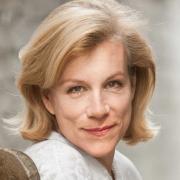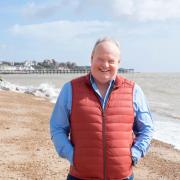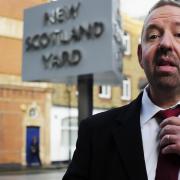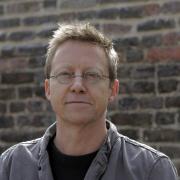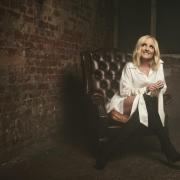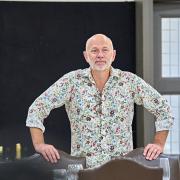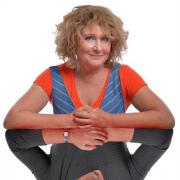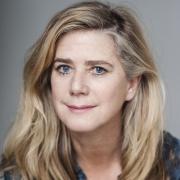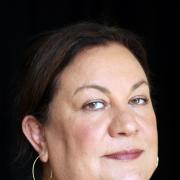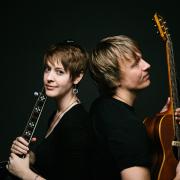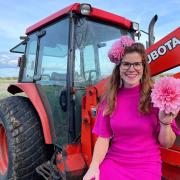Wimbledon is the stuff of dreams for many an ambitious tennis player. The legendary Christine Truman Janes knows what it's like to walk out onto the hallowed Centre Court
Every great sporting champion has to start somewhere. When this year's finalists at Wimbledon stroll out onto centre court to do battle for that most coveted of grand slam titles, it will be a dream come true... a dream usually born in a much humbler setting.
For Christine Truman Janes, who as Christine Truman played a Wimbledon final and claimed the position of women's number two in the world at the age of just 18, it was the annual Framlingham Tennis Tournament that helped stoke her burning ambition to be the best at her chosen sport.
As a child she spent her summer holidays in Thorpeness where her parents rented, then bought, a house that was large enough to accommodate their family of six energetic children. They travelled up from their Essex home in Woodford Green, to spend their time sailing and playing tennis. Framlingham Tennis Tournament - the oldest tournament in the country after Wimbledon - was a fixture in their holiday calendar.

For Christine, number five in the order, her first ambition was to be as good as her older siblings so she could play in the mixed doubles. It never happened, she says. But she did finally play in the 1952 event at the age of 11. It was the beginning of an illustrious career and a long, close connection with Suffolk. She and husband Gerry Janes, a former Wasps rugby player, moved to Aldeburgh more than two decades ago for a life by the coast, and Christine maintains her links with Framlingham Tennis Tournament as its president.
Christine's finest years were 1957-61 and she belongs in the pantheon of tennis greats along with Margaret Court, Ann Jones, Billy Jean King, and her doubles partner and rival for the top spot Maria Bueno. Dominating the men's game were the likes of Rod Laver, Ken Rosewall, John Newcombe and Lew Hoad. Until 1968 and the arrival of the open era, tennis wasn't a fully professional sport, there was no prize money, and players played for a shiny trophy and love of the game.
But it was a golden age - "very glamourous", recalls Christine, who has now written and published Miss Truman to Serve. It is, she insists, not a memoir but the story of "how it happened for me" - how a child born in the Blitz in 1941, raised in a family of six children, made it to the top of her chosen sport despite the privation and rationing of wartime and post-war Britain.



It was veteran sports broadcaster Des Lynam who first suggested she should write it. The pair know each other from their days on BBC Radio's sport commentary team. "He said there weren't many people who could write about that era of tennis," says Christine. Each time he and Christine spoke he'd tease her with 'how's the book coming along?' until finally, four years ago, he rang to wish her happy birthday and she was able to tell him she'd made a start.
The starting point was, in fact, a small brown suitcase of mementoes collected by her mother during the years Christine was travelling and playing tennis around the world. "There are photos, fan letters, newspaper clippings and invitations to all sorts of things," says Christine. "She kept everything and filed it in boxes." It's the main reason the book has been four years in the making. "It took me so long to go through it all!" As she sifted through the contents of the case Christine came across items she'd never even seen before - an invitation to play a Scrabble with the Duke of Bedford at Woburn.
There were also things that brought back vivid memories - a record of payment for her appearance on the Eamonn Andrews show in the late `60s (£1 11s), luncheon vouchers for her first Wimbledon tournament in 1957, her dance certificate signed by dance band leader Victor Sylvester, congratulations from former Suffragette Bertha Ryland, and telegrams from Clementine Churchill.


Gradually, Christine assembled them into some sort of order and, together with her own memories, wove them into the story of her tennis career. She admits that when she finished it and read it through it gave her a strange feeling. "It brought it all back - what and amazing time it was. I mean, I met Frank Sinatra!"
Christine well remembers when she first picked up a tennis racquet. "It was hard to get noticed when you're number five out of six children," she says. "My brothers and sister were a playing but I was never considered good enough to join in." Her first lesson at the age of nine was sheer luck - her sister was unwell and had to skip her lesson so Christine grabbed the chance to take her place. She played her first junior tournament when she was 10 and made her Framlingham debut a year later. By 1956 she was British junior champion and played her first Wimbledon the following year at the age of just 16. She got to the semi-finals but lost to eventual champion Althea Gibson.
In 1958, she tuned the tables, sensationally defeating Gibson in the Wightman Cup and helping to bring the trophy back to Great Britain after 21 consecutive defeats by the United States. In 1959, arguably her best year, she became the youngest women's singles champion at the French Championships at the age of 18, won the Italian Championships, and was runner-up to Maria Bueno at the US Championships. She ranked number two in the world just behind the legendary Bueno, who she teamed up with to win the women's doubles title at the 1960 Australian Championships.
In 1961, she beat the great Margaret Court in the Wimbledon quarter final and got all the way to the final when she was defeated by fellow Brit Angela Mortimer. Christine continued to play throughout the 1960s and early `70s, although injuries forced her to take breaks and she eventually retired from playing in 1975.


If it all seems a bit of a whirlwind it probably was. Christine became pretty famous pretty quickly - she was touring to far flung parts of the world such as Australia and the Caribbean at 18 without the entourage that follows a top professional today. Fame was always that double sided coin - as a teenager Christine had her own likeness at Madame Tussauds. "You appreciate people admiring your success but you're no longer anonymous and that can be difficult," she says. "You grew up quickly because you had to cope." But it was never a chore, she says and she's grateful to the philosophical coach who told her at age 16 that she should enjoy her tennis or her personal growth would be stunted.
She also considers herself lucky to have found success so young, and that she recognised when the moment came to quit. It's enabled her to have a life she might otherwise have missed out on. "The thing that made me different was that dedication - putting tennis before everything else. There came a point when I knew I couldn't give it that same dedication any more, that I wanted to be doing all the other things that a girl of my age wanted to do." Like marriage to Gerry Janes and raising a family. But while Christine retired from playing professionally, she didn't retire from tennis entirely, and joined the BBC Radio commentary team for the following 34 years.
She also taught and coached tennis - her children and grandchildren all play - and she's a regular attender at Wimbledon and the French Open. She recently joined the celebrations for the centenary of Centre Court, a place with special memories for her and so many players. "It's what most players dream of," she says. "When I walked out there, yes I was nervous and excited, but the thought going through my head was 'this is where I'm meant to be'. I feel very lucky to have enjoyed doing something I was good at."




